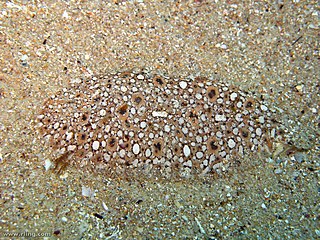
Equidae is the taxonomic family of horses and related animals, including the extant horses, donkeys, and zebras, and many other species known only from fossils. All extant species are in the genus Equus. Equidae belongs to the order Perissodactyla, which includes the extant tapirs and rhinoceros, and several extinct families.

A flatfish is a member of the order Pleuronectiformes of ray-finned demersal fishes, also called the Heterosomata, sometimes classified as a suborder of Perciformes. In many species, both eyes lie on one side of the head, one or the other migrating through or around the head during development. Some species face their left sides upward, some face their right sides upward, and others face either side upward.

Pleuronectidae, also known as righteye flounders, are a family of flounders. They are called "righteye flounders" because most species lie on the sea bottom on their left sides, with both eyes on their right sides. The Paralichthyidae are the opposite, with their eyes on the left side. A small number of species in Pleuronectidae can also have their eyes on the left side, notably the members of the genus Platichthys.

Hyaenodontidae is a family of extinct predatory mammals, and is the type family of the extinct mammalian order Hyaenodonta. Hyaenodontids were important mammalian predators that arose during the late Paleocene and persisted well into the Miocene. They were considerably more widespread and successful than the oxyaenids, the other clade historically considered part of Creodonta.

The Blephariceridae, commonly known as net-winged midges, are a nematoceran family in the order Diptera. The adults resemble crane flies except with a projecting anal angle in the wings, and different head shape, absence of the V on the mesonotum, and more laterally outstretched, forward-facing legs. They are uncommon, but dozens of genera occur worldwide, and over 200 species.

Lophorina or superb bird-of-paradise is a genus of birds in the family Paradisaeidae.
Scolomys is a genus of rodent in the tribe Oryzomyini of the family Cricetidae. Some evidence suggests that it is related to Zygodontomys. It is characterized, among other traits, by spiny fur. It contains two species, S. melanops and S. ucayalensis.

True's shrew mole is a species of mammal in the family Talpidae. It is endemic to Japan and is a common species above 1000 meters in grassland, shrubland and forest.

Limanda is a genus of righteye flounders native to the northern Atlantic and Pacific oceans.

Lepidopsetta is a genus of righteye flounders native to the North Pacific Ocean.

The genus Epiophlebia is the sole member of the family Epiophlebiidae, which is itself the sole living representative of the Epiproctan infraorder Epiophlebioptera, and it contains only four species. The first two species were historically placed in their own suborder Anisozygoptera, considered intermediate between dragonflies and damselflies, mainly because the hind wings are very similar in size and shape to the forewings and held back over the body at rest, as in damselflies. It has more recently been recognized that the genus Epiophlebia shares a more recent ancestor with dragonflies, and the group has accordingly been reclassified as an infraorder within the dragonflies. Very recently a third species, Epiophlebia sinensis, has been described from Heilongjiang province in northeast China, bridging the Epiophlebia distribution gap between Nepal and Japan. A fourth species is known only from larval material from South China.
Ixorheis is a genus of parasitic alveolates in the phylum Apicomplexa.

The Scombrinae are a subfamily of ray-finned bony fishes in the family Scombridae. Of the 51 species in the Scombridae, 50 are in Scombrinae – with the sole exception being the butterfly kingfish, which is placed in the monospecific subfamily Gasterochismatinae.
Achirus is a genus of American soles native to tropical and subtropical parts of the Americas. They are mainly found in coastal areas, including salt and brackish water, but some species are found in fresh water.

Trinectes is a genus of American soles native to the Americas. Most species are coastal, occurring in both salt and brackish water, but several may enter fresh water and one, T. hubbsbollinger, is restricted to rivers. They are fairly small, with the largest species only reaching 25 cm (9.8 in) in length.

Microchirus is a genus of soles native to the Eastern Atlantic Ocean and Mediterranean Sea.

Pardachirus is a genus of soles mainly native to coastal water in the Indo-Pacific. A single species, P. poropterus is restricted to estuaries and lower sections of freshwater streams. At least some species in the genus are toxic.

Pegusa is a genus of soles native to the Eastern Atlantic Ocean, Mediterranean Sea, and Black Sea.

Solea is a genus of soles from the Indo-Pacific and East Atlantic Oceans, and the Mediterranean Sea.

Zebrias is a genus of soles native to coastal waters in the Indo-Pacific and southern Australia. All species in the genus have clear dark and pale stripes, giving it a name derived from the word 'Zebra' due to the shared characteristic. At least some members of this genus are toxic.


















